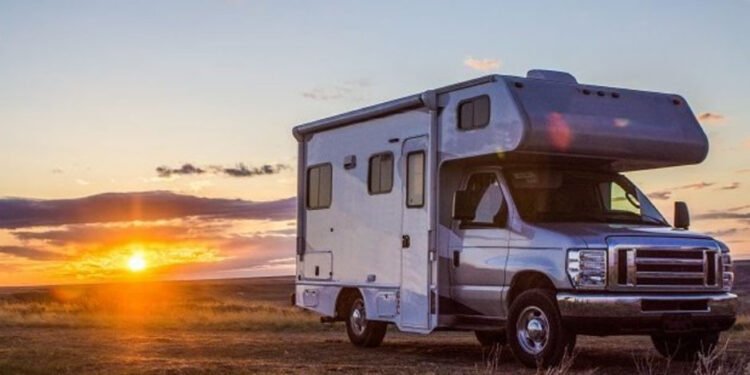Purchasing a recreational vehicle (RV) is an exciting investment, promising countless adventures and a home on wheels. However, RVs can be expensive, making financing an RV a popular and practical option for many buyers. Choosing the right financing plan requires careful thought and consideration to ensure it fits within your financial goals and lifestyle. Below, we delve into the key factors you should consider when exploring financing options for your RV purchase.
Understanding RV Financing
Financing an RV works similarly to financing a car, but it often involves larger amounts and longer loan terms. RV loans can be used to purchase new or used RVs and are typically available through banks, credit unions, online lenders, and even RV dealerships. These loans may range from several thousand dollars to over $100,000, with repayment periods lasting from five to 20 years or more.
The goal is to find a loan that offers favorable terms, competitive interest rates, and manageable monthly payments. Here’s what you should keep in mind when exploring your options.
1.Determine Your Budget
Before you start shopping for financing, establish a clear budget. Determine how much you can afford for a down payment and calculate a comfortable monthly payment based on your income and other expenses. Be realistic about the total cost of RV ownership, including:
- Insurance
- Maintenance and repairs
- Fuel
- Storage fees
- Taxes and registration
By knowing your financial boundaries, you’ll be better equipped to negotiate terms that work for you.
2.Check Your Credit Score
Your credit score is a crucial factor in securing financing for an RV. Lenders use it to determine your creditworthiness and to set your interest rate. Generally, a higher credit score can help you qualify for lower interest rates, saving you money over the life of the loan.
If your credit score needs improvement, consider taking a few months to boost it before applying for an RV loan. Paying down debt, making on-time payments, and reducing your credit utilization ratio can all contribute to a healthier credit score.
3.Compare Lenders
RV financing options are available from a variety of sources, each with its pros and cons:
- Banks and Credit Unions: Often provide competitive rates, especially for existing customers with good credit. Credit unions, in particular, may offer lower rates and more personalized service.
- Online Lenders: Provide convenience and quick pre-approvals. They may cater to a wider range of credit profiles but sometimes have higher interest rates.
- RV Dealerships: Offer in-house financing, which can be convenient, but be cautious of high interest rates or hidden fees.
- Manufacturer Financing Programs: Some RV manufacturers offer promotional financing rates for specific models, which can be an attractive option for new RVs.
Take the time to shop around and compare loan offers. Use online calculators to estimate monthly payments and total loan costs for different terms and rates.
4.Understand Loan Terms
When financing an RV, you’ll encounter various loan terms that can significantly impact your overall cost. Pay close attention to the following:
- Interest Rates: Fixed rates remain consistent throughout the loan term, while variable rates can fluctuate. Choose the option that best fits your financial situation.
- Loan Duration: Longer terms may lower your monthly payments but result in higher overall interest costs. Shorter terms save money in the long run but have higher monthly payments.
- Down Payment: Many lenders require a down payment of 10% to 20% of the RV’s purchase price. A larger down payment can reduce your loan amount and monthly payments.
Ensure you understand all aspects of the loan, including any prepayment penalties, late fees, or additional charges.
5.Consider New vs. Used RVs
Whether you choose a new or used RV can affect your financing options:
- New RVs: Tend to qualify for lower interest rates because they have a higher value. However, they also depreciate quickly.
- Used RVs: Often have lower purchase prices but may come with higher interest rates or shorter loan terms due to the lender’s perception of increased risk.
Weigh the pros and cons of each option based on your budget and long-term plans.
6.Think About Insurance Requirements
When financing an RV, lenders typically require you to carry full insurance coverage for the duration of the loan. RV insurance can be more expensive than standard auto insurance, especially if the RV is your primary residence.
Research insurance costs for the type of RV you’re considering and factor them into your budget. Policies may include collision, comprehensive, liability, and specialized coverages for personal belongings or roadside assistance.
7.Explore Additional Costs
Financing an RV involves more than just the loan payments. Be mindful of associated costs, such as:
- Taxes and Registration Fees: These can vary by state and add significantly to the overall cost.
- Extended Warranties: Often offered by dealerships, these can provide peace of mind but may also increase your monthly payments.
- Gap Insurance: Covers the difference between what you owe on the loan and the RV’s value in the event of total loss.
Understanding these expenses upfront can help you avoid surprises later.
8.Evaluate Your Long-Term Goals
Think about how long you plan to keep the RV and how you’ll use it. Are you purchasing it as a vacation vehicle for occasional trips, or will it serve as a full-time residence? Your usage plans can influence the type of loan you choose and the amount you’re willing to invest.
For example, if you plan to sell or upgrade your RV in a few years, a shorter-term loan with higher monthly payments may make more sense. Conversely, if you intend to keep the RV long-term, a longer loan term may be more manageable.
9.Pre-Approval Benefits
Obtaining pre-approval for an RV loan can simplify the buying process and give you a clear picture of what you can afford. Pre-approval allows you to:
- Shop confidently within your budget
- Negotiate more effectively with dealers
- Lock in competitive interest rates
Pre-approval also helps you avoid the temptation to overspend on an RV that’s beyond your means.
10.Consider Refinancing Options
If you’ve already financed an RV but are unhappy with your loan terms, refinancing could be a viable solution. Refinancing allows you to replace your current loan with a new one, potentially securing a lower interest rate or adjusting the loan term to better suit your financial situation.
Keep in mind that refinancing may involve fees or penalties, so weigh the potential savings against these costs.
11.The Role of Personal Loans
In some cases, a personal loan might be an alternative to traditional RV financing. Personal loans can be unsecured, meaning they don’t require collateral, but they often come with higher interest rates.
This option may be suitable for buyers with excellent credit or those purchasing a smaller, less expensive RV. However, traditional RV loans usually offer better terms for larger RVs.
Final Thoughts
Financing an RV can make your dream of RV ownership a reality, but it’s essential to approach the process with careful planning and research. By understanding your budget, comparing lenders, and considering all associated costs, you can secure a loan that aligns with your financial goals.
Owning an RV is about freedom and adventure, but smart financing is the key to enjoying those benefits without financial strain. Take the time to evaluate your options, and soon you’ll be hitting the open road in the RV of your dreams.












